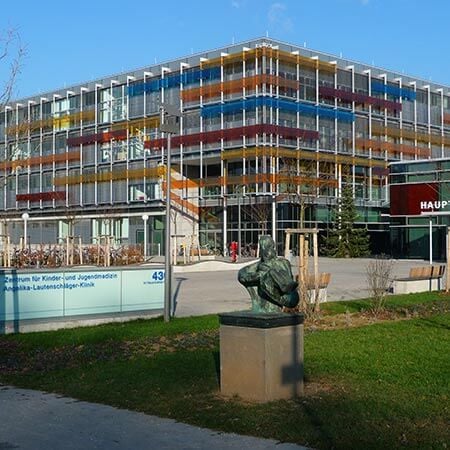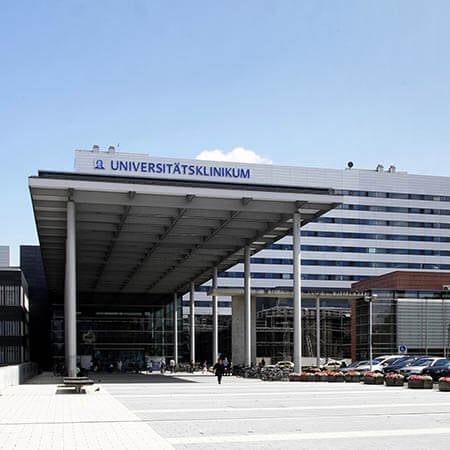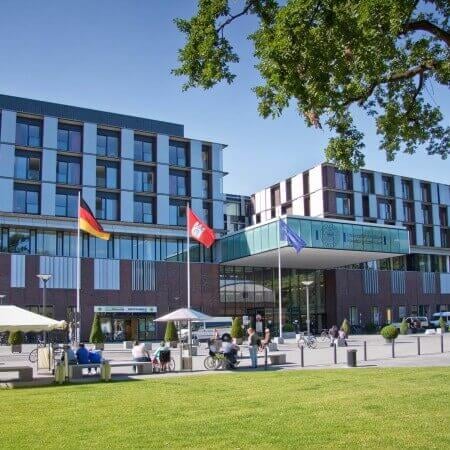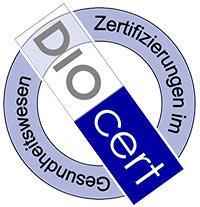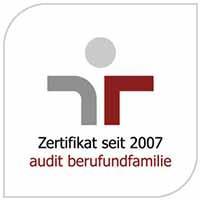Hodgkin lymphoma is an oncological disease of the lymphatic system. This type of oncology is characterized by initially multiple foci (simultaneously affected several lymph nodes or even several groups of lymph nodes).
Hodgkin lymphoma with lymphogenic spread (at the advanced stages of development it spreads to the liver and spleen) and non-Hodgkin lymphoma with hematogenous spread (via blood vessels) are distinguished.
Content
- Hodgkin lymphoma manifestations
- Treatment options that are available in Germany
- Chemotherapy
- Radiation therapy
- High dose chemotherapy and bone marrow transplant
- Treatment of Hodgkin lymphoma in children
- Rehabilitation after treatment
- Prognosis after the treatment of Hodgkin lymphoma in Germany
- How to choose a hospital for treatment in Germany?
- The cost of treatment in Germany
- How to apply for therapy in Germany?
Hodgkin lymphoma manifestations
The first manifestation of Hodgkin lymphoma is usually an increase in the size of lymph nodes. This process, as a rule, is not accompanied by a violation of the patient's well-being. In rare cases of oncology, enlarged lymph nodes are painful. Gradually, sometimes increasingly growing in volume, they merge into large formations.
Some patients with Hodgkin lymphoma experience an increase of the mediastinum lymph nodes especially. This increase can manifest itself at the advanced stages of oncology. In separate cases of oncology, Hodgkin lymphoma manifests itself with isolated affection of the portal lymph nodes.
The most frequent clinical manifestations in patients with enlarged lymph nodes are cough, shortness of breath, swelling, digestive disturbances, damage to the nervous system, and kidney damage.
Sometimes oncology begins acutely. The patient experiences fever and quickly loses weight. In these cases, a minor lymph nodes enlargement appears later.
The overall symptoms of Hodgkin lymphoma are very diverse. Starting in lymph nodes, a process can spread practically to all organs. In this case, various manifestations of intoxication develop such as weakness, lethargy, drowsiness, or headaches. The predominant affection of a particular organ or system determines the clinical picture of oncology.
Sometimes Hodgkin lymphoma affects the pulmonary tissue. Mild damage is usually not accompanied by external manifestations. With this oncology, fluid is quite often found in pleural cavities. As a rule, this is revealed during the X-ray examination. Coughing, shortness of breath, and less often pain may develop in such cases.
As for the risk groups, the risk of the disease is higher in patients who receive immunosuppressive therapy (for example, after an organ transplantation), in patients with congenital immunodeficiency and autoimmune diseases.
Most of the patients also develop insufficiency of cellular immunity (T-cell functions), which can lead to the frequent occurrence of infections at certain stages of the disease. At the advanced stages of the disease the protection of the patient's bodies is also suppressed. The death of patients from sepsis is common.
Treatment options that are available in Germany
In recent years, outstanding results have been achieved in the treatment of Hodgkin lymphoma. The purpose of treatment is, of course, a complete cure. Approximately 90% of patients are cured with chemotherapy and irradiation.
After establishing the stage of the oncology, the optimal treatment strategy is selected, where age, general condition, tumor type, and stage of the disease are taken into account. It is important to know about the possible risks and complications of the treatment tactics chosen.
There are two main methods of treatment of Hodgkin lymphoma, i.e. chemotherapy and radiation therapy. Sometimes one type of cancer treatment is used, sometimes both of them are applied in combination.
High-dose chemotherapy with bone marrow transplant is used in exceptional cases, in the ineffectiveness of other methods of cancer treatment. The surgical method has an auxiliary role in the treatment of patients with Hodgkin lymphoma.
Chemotherapy
Chemotherapy includes the use of antitumor drugs that destroy tumor cells. Typically, such drugs are administered intravenously. Often, several drugs can be used simultaneously.
Antitumor drugs destroy tumor cells but also damage normal cells, which results in the development of complications. These complications depend on the type of chemotherapy and dose of drugs, as well as on the duration of cancer treatment. Side effects include baldness, development of ulcers in the oral cavity, frequent infectious diseases, bleedings, fatigue, loss of appetite, nausea, and vomiting. These complications are temporary and resolve after the completion of cancer treatment. Symptomatic preparations for preventing nausea and vomiting can also be administered.
In addition, some drugs can lead to the development of side effects long after the completion of treatment. They can affect heart, lungs, growth, or reproductive potential. There is also the risk of a second tumor development. These problems need to be discussed with a medical professional before the treatment of Hodgkin lymphoma starts.
Radiation therapy
Radiation therapy usually starts after 3-6 chemotherapy courses. The radiation exposure can cause serious complications or damage to the adjacent healthy tissues in the form of redness of the skin and fatigue. Patients may notice long-term complications after radiation therapy.
High dose chemotherapy and bone marrow transplant
Sometimes standard therapy doesn’t allow getting rid of the neoplasm completely, and, thus, another type of cancer treatment might be indicated. To destroy tumor cells, significant doses of chemotherapy solutions are used, affecting not only tumor cells, but also bone marrow. Therefore, pre-collected and cryopreserved bone marrow stem cells are transplanted back after the completion of the chemotherapy course.
Another transplantation that is sometimes performed along with radiotherapy is called peripheral stem cell transplant. In this case, a special apparatus extracts stem cells from the patient's blood. This procedure usually takes several hours.
It is believed that such procedures are more effective in an earlier period of oncology, but not when the tumor has spread too far. If primary cancer treatment fails to destroy the tumor completely, then doctors can recommend stem cell transplantation.
Treatment of Hodgkin lymphoma is successful and effective in most cases. According to statistical information, in the United States, the relative 1-year survival rate after cancer treatment is 93%, and the 10-year survival rate is 72%. By 15 years, the overall survival rate is 63%.
Treatment of Hodgkin lymphoma in children
Even though the principles of treatment of Hodgkin lymphoma in adults and children don’t differ significantly, there are some peculiarities. If the child is in his teen years, then chemotherapy is preferred to irradiation, since radiation therapy may adversely affect the growth of bones and muscles. The purpose of the treatment of children is a complete cure without long-term consequences. The chances for a cure in children with Hodgkin lymphoma reach 85-100%, including patients with advanced process.
Rehabilitation after treatment
Each type of treatment is, unfortunately, accompanied by complications. You can speed up the process of recovery and reduce their severity if you are aware of possible complications of cancer treatment before it starts.
Each organism recovers at its unique pace, including specific responses to therapy for cancer. Thus, oncology manifests differently in different patients. Noone is able to foresee how a particular person will respond to one or another treatment method.
Follow-up of patients with Hodgkin lymphoma after cancer treatment is completed is a very important stage. Your doctor is going to guide you through the necessary examinations, including blood tests, chest X-ray, computed tomography, and other methods that can reveal the long-term side effects and complications, as well as allow for early detection of the disease recurrence.
Most people diagnosed with Hodgkin lymphoma get cured. However, many years after the therapy completion, some complications may occur in patients. The most severe complication of previously conducted treatment is the development of a secondary tumor. Some chemotherapeutic drugs or their combination with radiation therapy increase the risk of developing acute leukemia after treatment of Hodgkin lymphoma.
Prognosis after the treatment of Hodgkin lymphoma in Germany
The prognosis for this type of oncology is generally favorable. If treating it in German hospitals, achieving remission is possible in 80% of patients even at the advanced stages of the oncology. An important prognostic factor is the age of patients. The 5-year survival after chemotherapy in adults reaches 80%, and in children it exceeds 90%.
How to choose a hospital for treatment in Germany?
You can decide upon the medical facility based on the patients’ reviews, international ratings, experience in the treatment of the certain pathology, or your personal preferences regarding the stay in Germany.
The German hospitals that are considered the best for the treatment of Hodgkin lymphoma are:
- University Hospital Mannheim
- University Hospital Ulm
- University Hospital Freiburg
- University Hospital Heidelberg
- University Hospital Frankfurt am Main
- University Hospital RWTH Aachen
You can find more information about the listed German hospitals on the Booking Health website.
The cost of treatment in Germany
The cost of treatment in Germany depends on the stage of Hodgkin lymphoma and treatment plan. The treatment regimen is elaborated by a doctor for each patient individually, depending on the medical indicators. To determine the estimated price of treatment in Germany, a description of the complaints, blood tests, as well as X-ray, MRI, CT scan, etc. are required. Based on this information, the specialists of the German hospitals will draw up a preliminary medical plan and give a price for treatment.
In general, the cost of treatment with chemotherapy in Germany is 7,000-8,640 EUR. The cost of treatment with radiotherapy in Germany is in the range of 12,179-26,562 EUR.
Prices for treatment in Germany may seem high, but efficiency and relevant recovery statistics fully justify them.
You can learn more about the cost of treatment in Germany, and particularly about the cost of Hodgkin lymphoma treatment in different German hospitals, on the Booking Health website.
How to apply for therapy in Germany?
Coming to Germany for therapy is easier than it seems at first glance. You can simply use the services of Booking Health – this way it will be more convenient and reliable than with doing it on your own.
Booking Heath works with German hospitals directly and prepares a program of treatment in Germany with a full range of services of the chosen hospital. The program is based on the specifics of your disease and your personal preferences. This way you save time, money, and energy.
Leave the request on the Booking Health website right now, and a medical advisor will contact you shortly and guide through all stages of treatment in Germany.
Authors:
The article was edited by medical experts, board-certified doctors Dr. Nadezhda Ivanisova and Dr. Sergey Pashchenko. For the treatment of the conditions referred to in the article, you must consult a doctor; the information in the article is not intended for self-medication!
Sources:
National Cancer Institute
Canadian Cancer Society
MedicineNet
